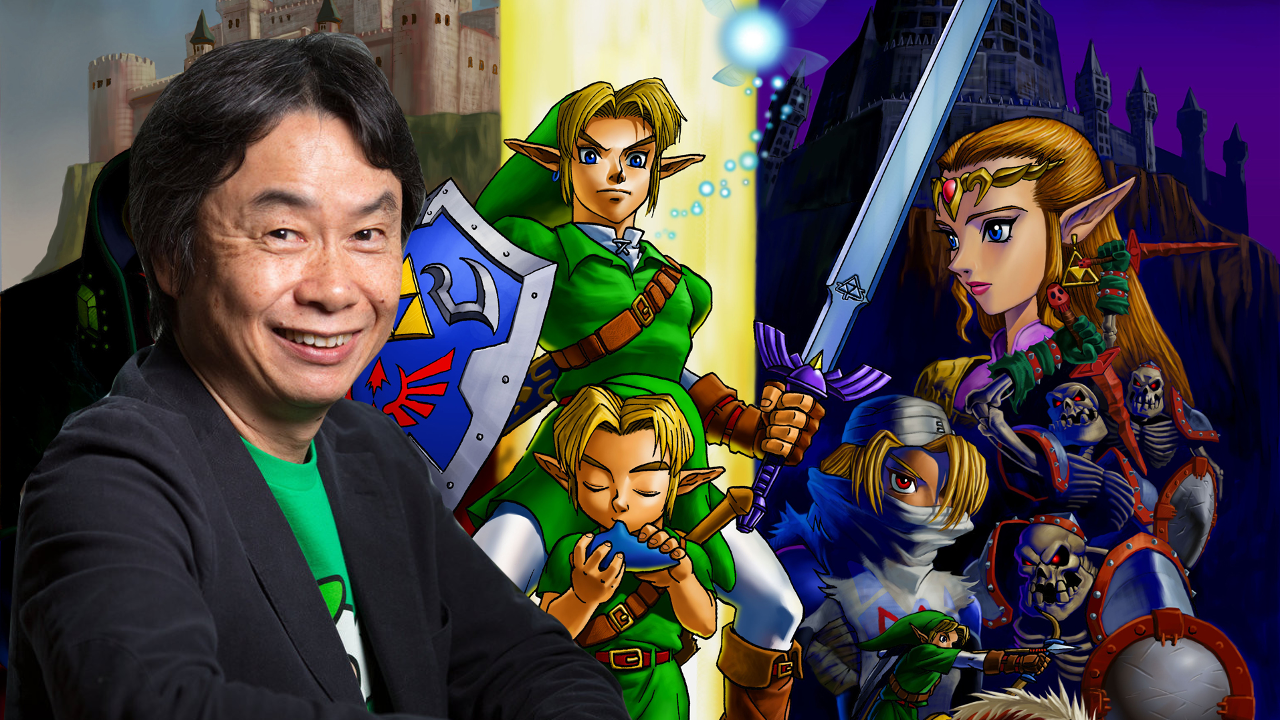Newly Translated Shigeru Miyamoto Interview is a Treasure Trove of Ocarina of Time Secrets
Posted on January 27 2022 by Michaela El-Ters

Nowadays, we live in an era where interviews with video game creators and developers are commonplace and readily available on the Internet. Video interviews and development blogs are usually just a Google search away, and it’s fun for fans and developers alike to discuss the inspirations for a given game or why certain decisions were made during development. For older video games, though, this level of interactivity wasn’t so common. As a result, it’s a pleasant surprise to find old interviews crop up unexpectedly.
A fascinating interview with The Legend of Zelda creator Shigeru Miyamoto, which first appeared in Japanese strategy guide The Legend of Zelda: Ocarina Encyclopedia of Time in 1999, has been newly translated by translation group shmuplations and posted online for Zelda fans worldwide to enjoy. The interview is a treasure trove of secrets revolving around Ocarina of Time‘s development, ranging from gameplay philosophies, accessibility and difficulty, and what it means to have that “Zelda-ness.”
One notable excerpt from the interview that has been reported across various news platforms recently relates to Miyamoto’s response to Ocarina of Time‘s fairy companion Navi. Miyamoto discusses why he feels Navi’s inclusion is a weakness in the game, and the lengths the development team would have needed to take to make her advice more meaningful:
Miyamoto: I think the way we give hints is still a little too unfriendly. Speaking plainly, I can now confess to you: I think the whole system with Navi giving you advice is the biggest weakpoint of Ocarina of Time. It’s incredibly difficult to design a system that gives proper advice, advice that’s tailored to the player’s situation. To do it right, you’d have to spend the same amount of time as you would developing an entire game, and I was very worried we’d be digging ourselves into a hole, if we pursued perfection there…
If you read Navi’s text, she says the same things over and over. I know it makes it sound bad, but we purposely left her at a kind of “stupid” level. I think if we’d tried to make Navi’s hints more sophisticated, that “stupidity” would have actually stood out even more. The truth is I wanted to remove the entire system, but that would have been even more unfriendly to players. You can think of Navi as being there for players who stop playing for a month or so, who then pick the game back up and want to remember what they were supposed to do. It’s a brazen excuse, I know. (laughs)
A Link to the Past and Link’s Awakening are both notable for their prominent inclusion of Mario series Easter Eggs such as the Yoshi Doll and Chain Chomp. In the interview, Miyamoto actually discusses Chain Chomp’s potential inclusion in Ocarina of Time and why it was ultimately scrapped:
—While Ocarina of Time features familiar characters like the Tektites and Armos Knights, there are also some notable absences. The Mario series regular Chain Chomp, for instance, who appeared in ALttP, didn’t make the cut.
Miyamoto: Actually, Chain Chomp was in there up to the very end, but in the final revisions we removed him. Do you know where he was going to appear?
—Was it the desert area?
Miyamoto: It was Gerudo’s Fortress. If the Chain Chomp grabbed Link, he’d be bound by chains, and could only escape by using the hammer to break the chainlinks.
I think Ocarina of Time‘s magic spells, particularly Din’s Fire, are some of the coolest we’ve ever had in the Zelda series, and I would love to see more magic spells return in future Zelda games. Surprisingly, however, Miyamoto wasn’t especially fond of incorporating magic if it didn’t have a specific purpose or impact:
—Your well-known “dislike of magic” is alive-and-well in this latest Zelda. In ALttP, there were the three magic medallions, but they had hardly any use outside of a few events. Ocarina, likewise, has Din’s Fire and that’s it. The lack of emphasis on magic—or to be more ill-spirited, a contemptuous attitude towards magic (laughs)—is this too a part of “Zelda-ness”?
Miyamoto: You’re overthinking it. (laughs) If it were up to the team, though, they always want to create more magic. In Ocarina, as well, there was a version where you could use 5 or 6 magic spells, but they didn’t really leave much of an impression on me, and I decided those effects would be better served as items, or as Ocarina songs. I do hope that in the future magic can be used as a way to show off the power of the new 3D visuals. It’s not that I “dislike” it, you see, I just think relying on magic is taking the easy way out somehow.
Ocarina of Time was a pioneer in the development of three-dimensional video games, introducing Z-targeting in a 3D space to make combat more fluid and dynamic. As a kid, there were definitely times when I struggled with the combat, so it’s interesting to hear from Miyamoto about how the difficulty shifted during development:
Miyamoto: The sword combat in Ocarina didn’t turn out as well as I’d hoped, unfortunately. I’m pretty bad at action games myself, so I wanted Ocarina to have a system with depth, something you could steadily improve at the more you played—though it didn’t need to be as complex as Tekken, of course. (laughs)
At the same time, however, part of me wanted the action to be easier than Mario 64. There were people who had told us “I couldn’t get past the later stages in Mario 64”, and I felt we needed to make sure Ocarina could be finished by them, otherwise it wouldn’t be a proper Zelda game. About a year into the development, I realized that if we lean too heavily into the sword combat, it will definitely end up being more difficult than Mario 64, so we pulled back and eased into the simpler system we have today.
This interview is chock-full of fascinating details about Ocarina of Time‘s development, secrets therein, and Shigeru Miyamoto’s own thoughts on the iconic game. I’ve always adored reading about Ocarina of Time, and any time I can discover more about it from a behind-the-scenes perspective, it always gives me a new appreciation for the game. If you love Ocarina of Time, read the full interview right here to learn more.
What do you think of Shigeru Miyamoto’s thoughts on the game’s difficulty, emphasis on music versus magic spells, or Chain Chomp almost being in the game? Let us know in the comments!
Source: shmuplations (via Kotaku)

Michaela El-Ters is a Senior Editor for Zelda Dungeon. She is also an Senior Writer for Boss Rush Network, and writes blogs and streams games on Objection Network. Her favorite Zelda game changes with the seasons, but the series as a whole is near and dear to her heart.



